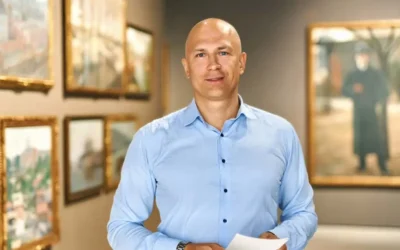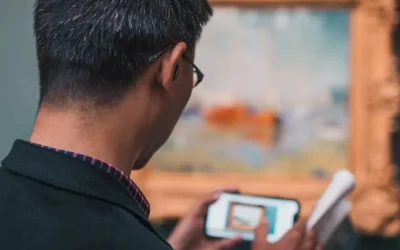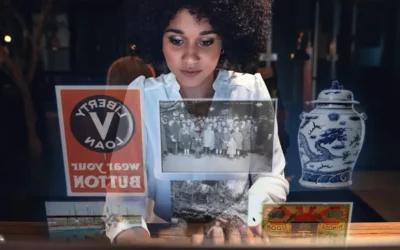#AskACurator Day

Rachael Cristine Woody
September 18, 2019 was #AskACurator Day. This is a day where curators and other museum professionals answer questions from the public and each other on Twitter.
While “Ask A [insert professional here] Day” is now a common phenomenon with many different flavors (#AskAnArchivist was October 2) it’s worth noting that #AskACurator was one of the first of such days. Created in 2010 by Jim Richards and stewarded by Mar Dixon, #AskACurator day just celebrated its 9th year.
The Purpose of #AskACurator Day
#AskaCurator Day was created as an outreach mechanism to make museum professionals more available to the public and answer their questions. While “curator” is in the name, it’s important to note that the day isn’t just about curators – any museum professional can participate. From the public’s perspective they don’t necessarily know the many jobs it can take to run a museum, and all museum staff can and should participate in this outreach activity. This is the perfect time to talk about your role at the museum, how a person can become a [your job title], what your days are like, your favorite part of the job, the value your museum brings to the community, etc.
A 2019 Recap of #AskACurator Day
Current #AskACurator Day coordinator Mar Dixon provides a 2019 recap of top questions and interesting insights. Popular questions were:
- What’s your favorite object?
- Have you ever broken an item?
- What do you love about your job?
- What does your typical day look like?
- What did you wish you learned in school to help prepare you for your job?
- What’s the weirdest object in the collection? (There were several tweets on best bums and toilets).
There were also some serious questions for museum professionals to tackle in 280 characters or less:
- How has interpretation changed in the last 5-years?
- What diversity measures is the museum implementing?
- Has anyone been fired for unethical actions such as creating a false provenance?
- How do museums grapple with colonialism, whiteness, and false neutrality issues?
- What is your museum doing to collect and show LGBTQIA history?
Suggestions for How to Participate
If you’ve never participated before, you can get a good idea of what the day will entail by searching #AskACurator in a Twitter hashtag search. Here are a few recommendations for how you can effectively participate:
- Don’t wait for a direct question to you or the museum account. There are plenty of questions out there that you can review using the #AskACurator hashtag search. So, follow the hashtag and start answering the tweeted questions you’re interested in.
- Consider a Twitter “takeover” by taking over the museum’s official Twitter account. This provides a more visible platform for museum professionals and it enriches the content and level of engagement for the museum’s account. Win-Win.
- If you do host a “takeover” make sure to introduce yourself and your job title so that participants know they’re tweeting with you rather than the museum’s social media manager.
- If your museum plans to participate, begin hyping the day a week prior so as to alert your museum’s direct Twitter constituents. Memes, gifs, and other visual and light-hearted media are the most effective at garnering attention and retweets.
- Photos and short videos are very popular on any day, and especially this day. Most members of the general audience want to see what it is that you do and what collection items you work with. Showing “behind the scenes” pictures are a great way to generate interest in your tweets.
- This event is a great time to promote museum events and resources—especially the free kind. This is a day when you want to be giving more than receiving.
- Retweet and comment on other #AskACurator tweets in order to help raise visibility of peer museums and contribute to the overall engagement.
- When the day is over, sign off thanking people for participating.
- When the event is over take some time to review what received the most engagement. What were people most interested in? What was the most asked question? These can offer great insights into what your community stakeholders want to know and you can further encourage engagement by creating a blog post, webinar, Facebook live, or other outreach tool with this content in mind.
#AskACurator Day 2020!
Don’t forget to mark your calendars for next year’s #AskACurator Day on September 16, 2020. The annual Q&A day will be celebrating its tenth year—so make sure you don’t miss the festivities!

Rachael Cristine Woody
Consultant, author, and blogger Rachael Cristine Woody advises on museum strategies, collections management and grant writing for a wide variety of clients. Learn about Lucidea’s Argus solution for museum collections management and download your free copy of Rachael’s new book for Lucidea Press, How to Select, Buy, and Use a Museum CMS!
Similar Posts
Storytelling to Inspire Reflection Using Museum Collections Online
Storytelling with online collections is impactful, whether we choose online-only or as part of a hybrid approach to museum exhibitions.
Museum Collections Online: Learning Through Storytelling
Digitizing museum collections introduces new and engaging opportunities for storytelling. By leveraging digital surrogates—essentially online representations of physical objects—museums can enhance how they present narratives and information to audiences.
The Role of Museum Collections Online in Storytelling & Audience Engagement
Storytelling with museum collections online allows for a great degree of flexibility, offers additional detail, and lends a dynamism that is difficult to produce within a physical exhibition.
Examples of How Archives Can Be Used to Elevate Museum Collections
Last week we reviewed how archives can enhance museum collections online. This week will continue our work with an examination of specific examples, including what items different types of archives may contain and where to capture this data.




Leave a Comment
Comments are reviewed and must adhere to our comments policy.
0 Comments